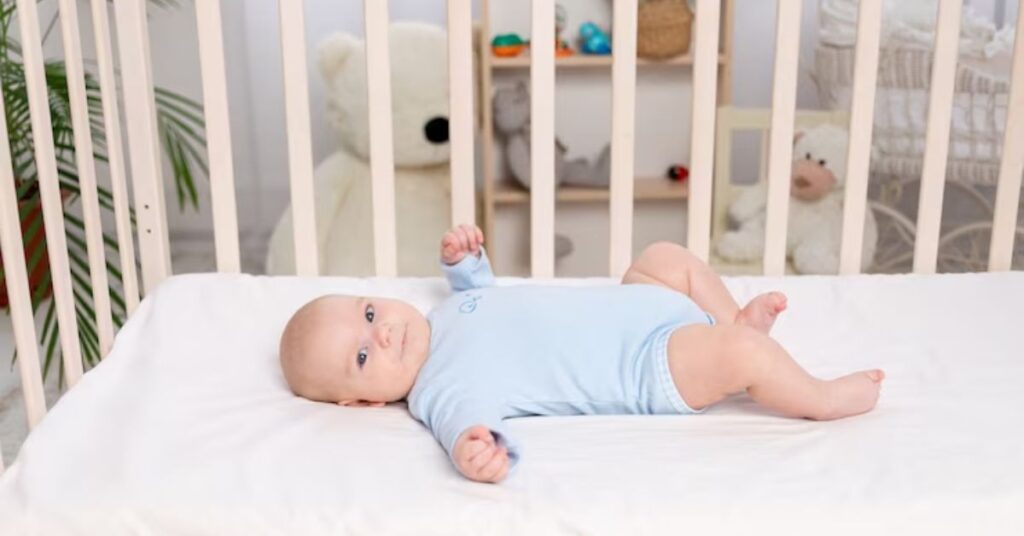Last Updated on July 27, 2023 by Muhammad Sohaib
As a loving parent, you always want the best for your little ones. Creating a cozy and comfortable environment for your baby 👶 is essential for their well-being. One often overlooked aspect of a baby’s comfort is the humidity level in their surroundings.
As new parents, one common question that comes to mind is, What is the best humidity level for a baby?
So, don’t worry!
In this blog, we’ll explore the ideal humidity level for baby and provide easy, user-friendly tips to maintain it. Read more 📖
What is Humidity?
Moisture content in the air is referred to as humidity. It plays a vital role in your baby’s comfort, as it affects their breathing, skin, and overall health. Maintaining the right humidity level is crucial to avoid discomfort and respiratory issues for your little one.
What is the best humidity level for baby?
Having the ideal humidity is crucial for your baby’s well-being. High humidity can lead to respiratory and skin issues, which we definitely want to avoid. So, what should the humidity be in your baby’s room?
According to the Environmental Protection Agency in the US, the recommended range of humidity is between 30% to 60%. Keeping it below 60% helps prevent allergen growth and keeps your baby comfortable and healthy.
Humidity’s Influence on Babie’s Health
Babies are more sensitive to humidity levels compared to adults, so it’s essential to consider how it affects them. Both high and low humidity can be problematic for infants, impacting their sleep patterns and we all know how crucial their sleep is (around 18 hours a day!).
Humidity also plays tricks on how we perceive temperature. When it’s too low, we feel colder, and when it’s high, we feel warmer than the actual temperature and the same goes for our little ones.
Low humidity can lead to dry skin and nasal passages, causing irritation and cracked lips in babies. On the other hand, high humidity can create molds and allergens, which pose health risks for your bundle of joy.
While it’s commonly advised to maintain the baby’s room temperature between 65°F to 72°F, don’t forget to pay attention to the humidity level as well.
Why is maintaining balanced humidity important for the newborn’s health?
Maintaining a balanced or ideal humidity level for baby room is crucial to ensure their comfort and well-being. As a new parent, you have many things to consider, from your baby’s nutrition and sleep to their overall health. The humidity level in the room also plays a significant role in your newborn’s health.
During winters, the dry air with low moisture can quickly dry out your baby’s nasal passages, making them more susceptible to congestion and blocked noses.
Additionally, viruses and bacteria tend to thrive better in cold and dry air, increasing the chances of your baby catching colds, coughs, and flu during the winter months. Newborns have much smaller air passages compared to adults, making dry winter air a particular concern for their delicate respiratory systems.
By maintaining balanced humidity, you can promote your newborn’s overall health and well-being. Using a humidifier in your home can help you achieve the ideal humidity level for baby, providing a comfortable and healthy environment.
Benefits of Proper Humidity for Your Baby
Respiratory Health: Maintaining an ideal humidity level can help soothe your baby’s delicate airways, reducing the risk of respiratory problems, allergies, and dry throats.
Skin Hydration: Babies have sensitive skin, and the right humidity level prevents dryness and itchiness, keeping their skin soft and supple.
Sound Sleep: ideal humidity levels promote better sleep for your little one, which also means more restful nights for you.
Temperature Regulation: Proper humidity assists your baby’s body in regulating temperature effectively, preventing overheating or chilling.
Tips to Maintain the Ideal Humidity Level
1. Humidifier: Invest in a good quality humidifier for your baby’s room. There are two main types – warm mist and cool mist humidifiers. Cool mist humidifiers are generally safer for babies, but both can be effective when used correctly.
2. Regular Cleaning: Ensure you clean the humidifier regularly following the manufacturer’s instructions. Regular cleaning prevents mold and bacteria from building up and maintains healthy air quality.
3. Hygrometer: Place a hygrometer in your baby’s room to monitor the humidity levels. This simple device will help you keep track and adjust the humidifier accordingly.
4. Ventilation: Proper ventilation is essential in maintaining the right humidity level. Open a window or use an exhaust fan when needed to let fresh air circulate.
5. Avoid Over-Humidification: Too much humidity can create a breeding ground for mold and mildew. Always aim for the recommended humidity range, and avoid excessive moisture.
Final Words
Creating a comfortable and nurturing environment for your baby 👶 is a top priority as a parent.
Remember, the ideal humidity level for baby room falls between 30% to 60%. Investing in a good humidifier, regular cleaning, monitoring with a hygrometer, proper ventilation, and avoiding over-humidification are simple steps to ensure your baby stays happy, healthy, and comfortable.
By following these user-friendly tips, you’re well on your way to becoming a humidity expert and a champion parent!

Muhammad Sohaib is an experienced SEO expert with over 4 years in the digital marketing world. He is the founder of MomsChild.com, a growing parenting blog that covers topics related to kids, moms, baby products, and helpful family tips. Sohaib combines his SEO knowledge with a passion for creating content that supports parents in making informed choices. Through MomsChild, he shares practical advice, trusted product guides, and informative resources to help families navigate the joys and challenges of parenting in today’s world.






